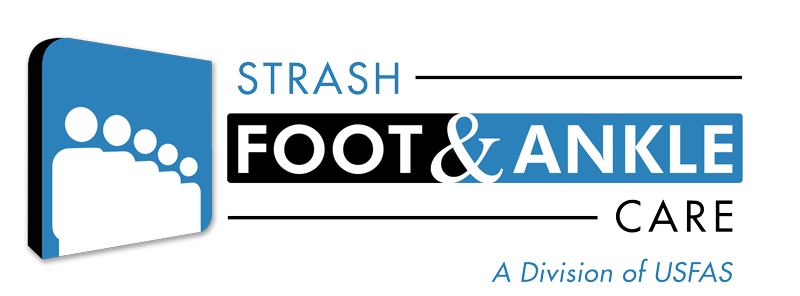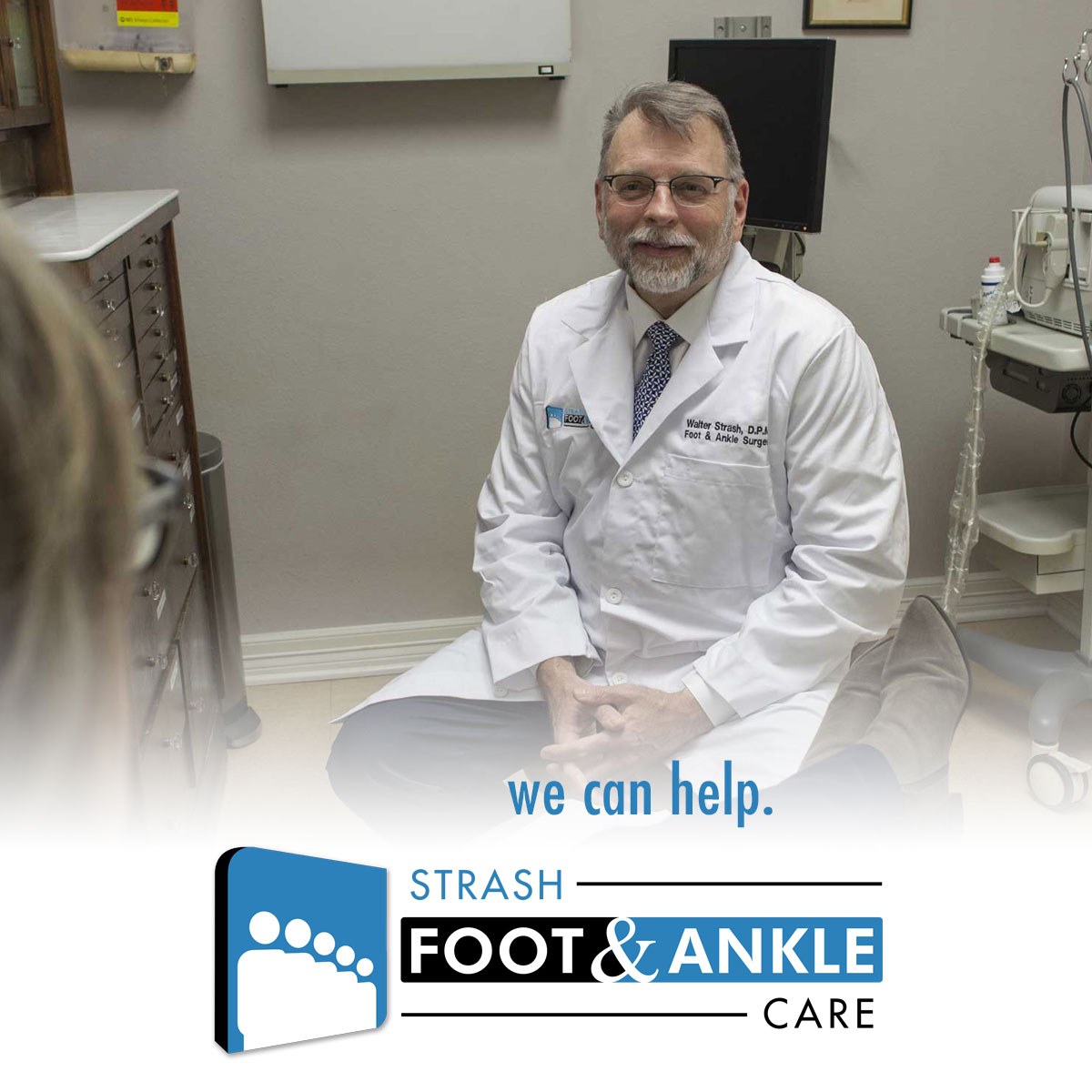
08 Sep Treating Strains, Sprains & Fractures
Strains, sprains and fractures are the most prevalent foot and ankle injuries, affecting more than 1 million people annually in the United States. Ankle and foot trauma often occur during sports or recreational activities, but people also commonly suffer these injuries while walking or during normal activities at work or at home.
You Twisted Your Ankle, Now What?
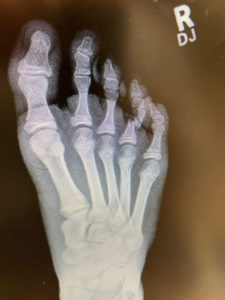
You hurt your ankle. Possibly, you were hurrying after the bus and stepped off the curb. Maybe, it was a dog you tripped over. On second thought, there was a slick floor that caused you to slip and fall. A dip in the lawn, and suddenly you’re on the ground. No matter the reason behind the fall, the outcome is the same. You find yourself unable to walk on a twisted, swollen ankle. What do you do, now? You could go to the emergency room, and pay an exorbitant amount of money for minimal care. There an ER doctor will take X-rays and inform you whether or not it’s broken, and then her job is done. No follow up, no aftercare. You’ll find yourself wrapped up in a splint, hobbling around on crutches, and told to go find a specialist sometime later in the week.
There is another option where you actually receive care along with your diagnosis at a fraction of the cost of an ER visit and receive a higher level of care simultaneously. At Strash Foot and Ankle Care, we have same day and next day appointments available, reserved for cases like yours. We have an X-rays machine is inhouse, so no traveling elsewhere for the exam. The doctor will sit down with you and review the images in person as well and describe possible outcomes from the trauma.
An ankle fracture or sprain isn’t something planned for, but needs to be taken care of within a specific amount of time. Sometimes surgery is required. Sometimes it isn’t. A board certified foot and ankle surgeon has the best knowledge and skills to determine when surgery is indicated and how to perform the surgery, if necessary. Both Dr. Strash and Dr. Bills are board certified by the American Board of Foot and Ankle Surgeons, making them qualified to perform your ankle fracture surgery.
Busting the Myth of Broken Toes
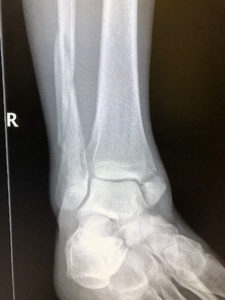
A broken toe should not be taken lightly until an expert has reviewed your case. A common misconception is that “you can’t do anything about a broken toe.” Not all toe fractures are created equal. Broken toes are categorized into three basic groups:
1.Closed nondisplaced toe fractures
2.Closed displaced toe fractures
3.Open toe fractures
Closed describes the fracture as lacking a break in the skin when the fracture occurred. Displacement describes whether or not the toe has shifted after breaking. Unlike the first category which usually requires monitoring the bone healing process conservatively, the last two of the three general types of toe fractures require surgical intervention from a specialist. Conservatively, we monitor bone healing with off-loading, typically a special cast, shoe, or boot paired with serial X-rays over time. It is always a good idea to combine bone healing with vitamin D, to support overall bone health while we wait for the fracture to close.
A closed displaced fracture means that not only did the bone break, but it also shifted underneath the skin as well. It should come as no surprise that the bone will not move itself back into position once the bone has been dislocated.These types of fractures are unstable and require some type of treatment in order to get them back into alignment. In medicine, we call this reducing the fracture. The goal of a reduction is as follows:
1. Obtain proper anatomic alignment of the bone.
2. Stabilize the fracture so that the bone is incapable of further dislocation.
By reducing a fracture, it improves the bone’s ability to heal. It also allows proper alignment of the bone so that when it does heal, it heals in its proper position. A specialist will decide when it’s most appropriate to reduce and fixate a fracture with surgery.
Open fractures are a medical emergency, meaning they need to be treated quickly to avoid potential complications. Open describes a break in the skin overlying the very area where the fracture occurs. At times, this even means the bone may be protruding from the skin. Open fractures are graded on the size of the opening and the cleanliness of the environment where the break took place. Open toe fractures are medical emergencies requiring prompt care. One of the more common types of open toe fractures are caused by lawn mower injuries.
My Foot is Broken, Now What?
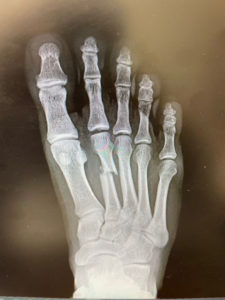
The world of sports introduces mainstream America to Various types of trauma that would otherwise be unheard of. The different types of foot fractures and their names get thrown around the news like everybody has heard of them before. Some of these include the following:
Jone’s Fractures
Lisfranc Fractures
Turf Toe
Most people who follow sports can name an athlete who has had one of these three injuries. When the force put on the foot outweighs the capabilities within the structure of the bone, fractures happen. In brief, the amount of force determines the severity of the fracture. The amount of dislocation or instability caused by that fracture determines whether or not surgery is indicated. Different types of collisions In sports can provide enough force for foot fractures to happen. Sometimes these collisions are between two individuals, and sometimes these collisions are between the individual and the playing surface. Motor vehicle collisions account for many fractures as well. What could be considered simple falls can lead to more complex problems depending on the force placed with foot at the time. A fall from a height drastically increases the risk of a foot fracture, especially the risk of heel fracture. Finally, crush injuries can have a severe impact on the foot and lead to emergent situations and possible amputation.
Most fractures are treated conservatively with some type of protection. Fractures that have a low healing potential or are unstable require surgery to increase the ability for the bone to heal or increase the position and stability of the bone. The reason we hear about the above listed fractures in the foot, is because they have a lower threshold for when surgery is necessary. They also have potential for poor outcomes due to the nature of where the fracture occurs in the foot. Some of these injuries can be potentially career ending. Pages of research have gone into treating these various foot fractures to the benefit of all those who suffer from them. This research has greatly increased the positive outcomes for patients both athletes and non athletes alike.
The doctors at Strash Foot and Ankle Care stay up to date on the latest procedures and technology to treat your fractures, getting you back on your feet.
